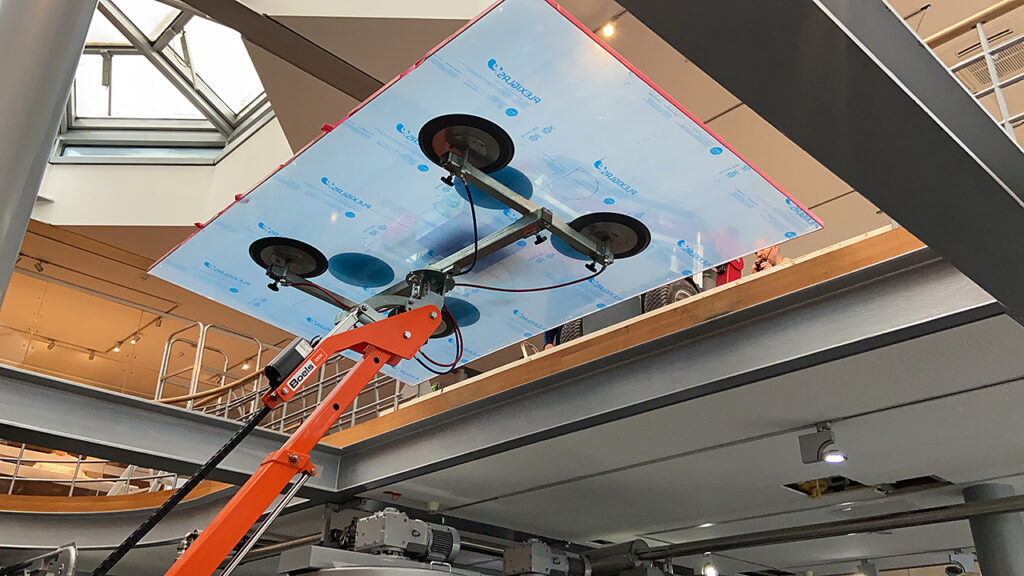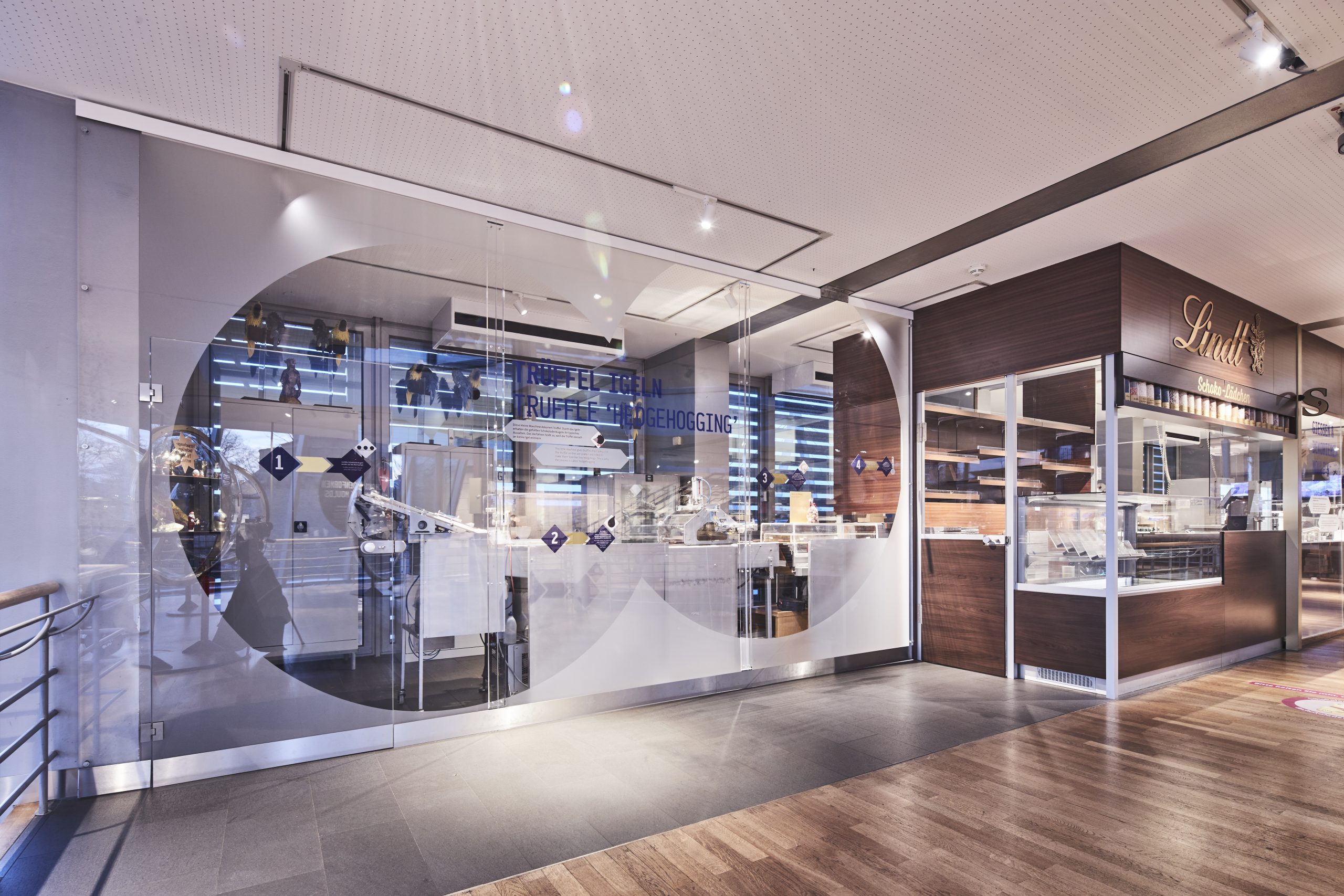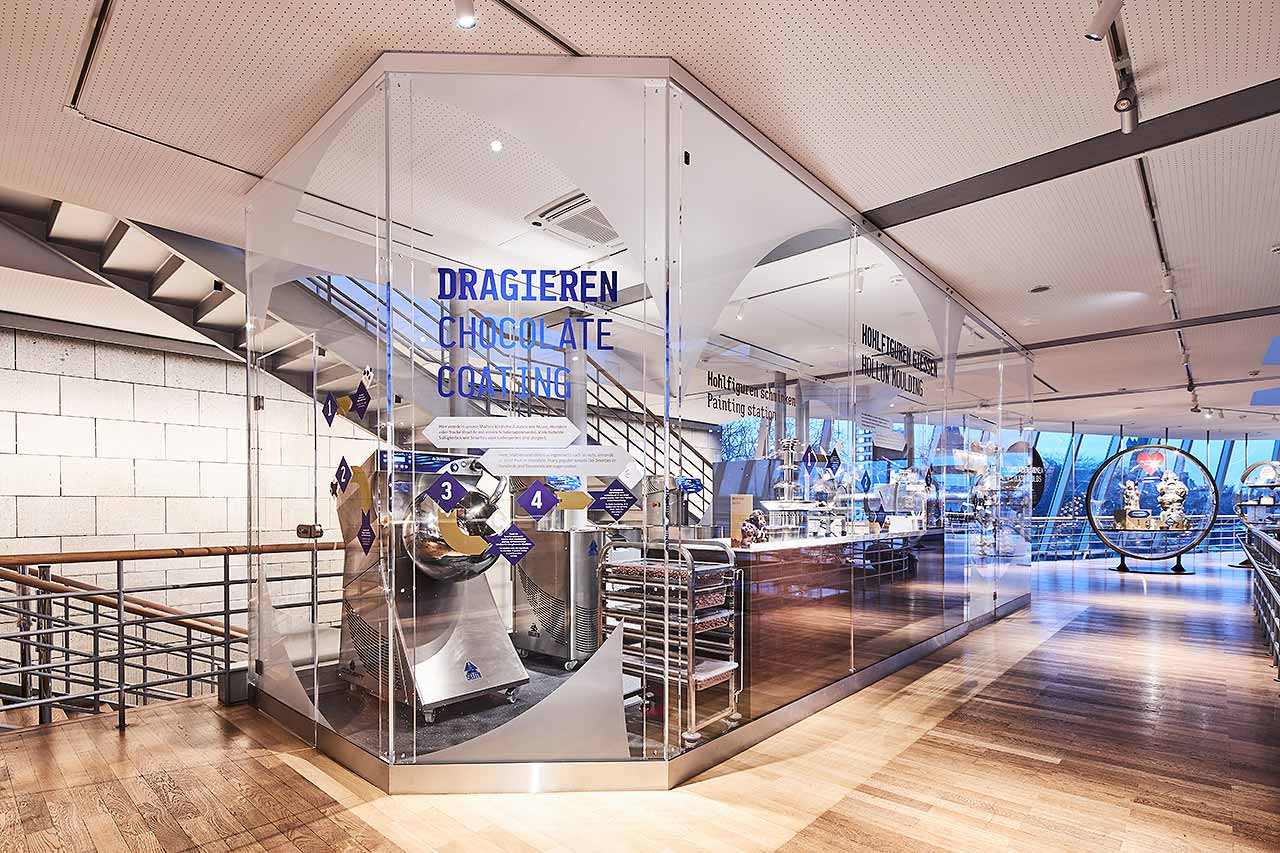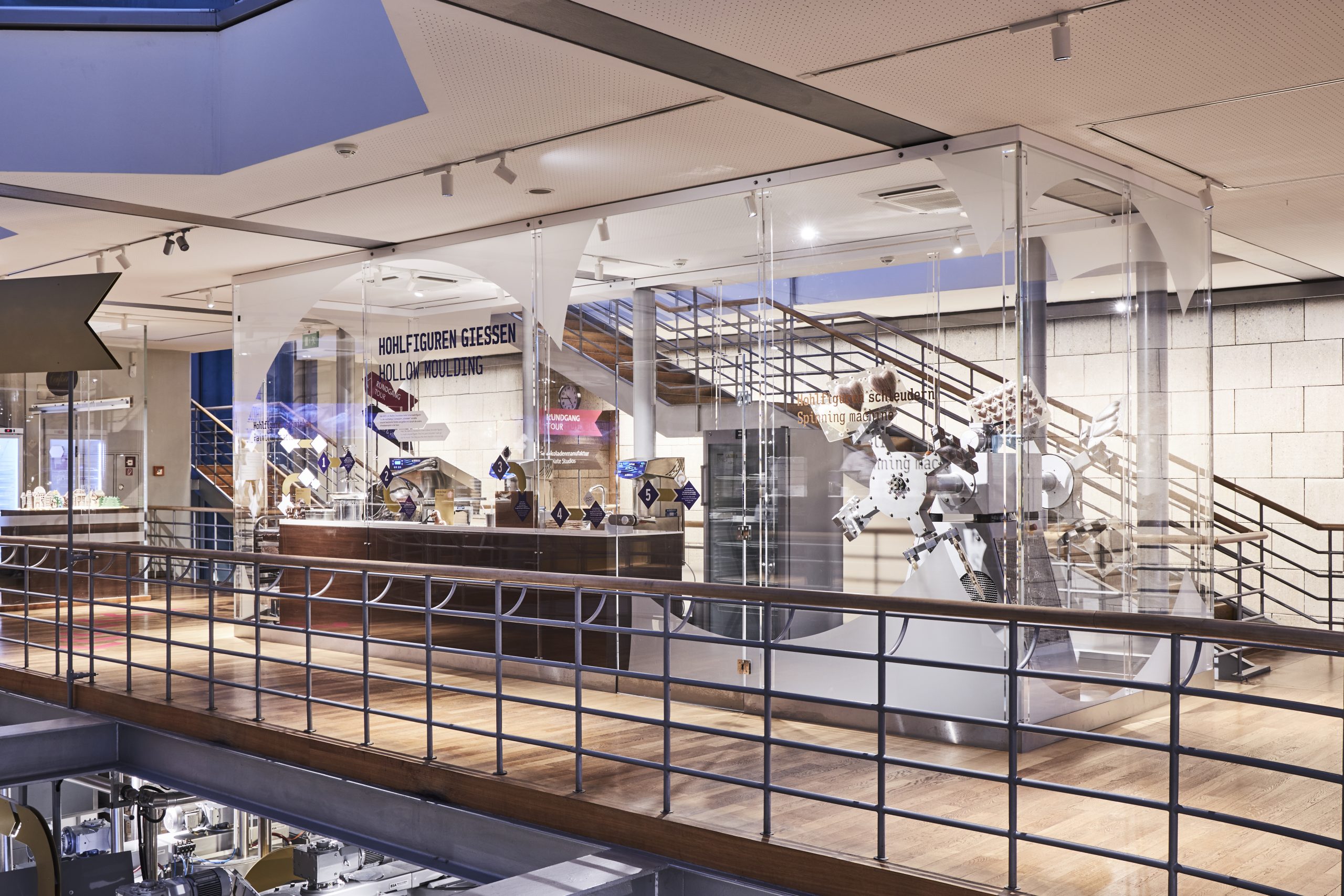Transparent chocolate production
The Chocolate Museum in Cologne gives visitors an insight into the production of sweet figures, truffles and pralines. The PLEXIGLAS® viewing windows are so transparent that you are tempted to reach out and touch them.
Almost everyone loves chocolate! But who has any idea how the bitter cocoa beans are transformed into sweet delicacies? The Cologne Chocolate Museum shows the production steps from roasting to the finished bar in a walk-in chocolate factory.
The highlight is the glass chocolate factory, where chocolatiers demonstrate their craftsmanship: In the hollow figure studio, they paint molds with liquid chocolate. This gives Santa Clauses white beards and Easter bunnies dark googly eyes. At another station, chocolates and truffles are decorated. This fascinating manufactory was modernized by Hans Fischer in spring 2020 with large-format viewing windows made of PLEXIGLAS®.
Unobstructed view of the chocolatiers’ work
“We want to make the production of chocolate transparent and tangible for our visitors,” says Dr. Christian Unterberg-Imhoff, Managing Director of the museum. And where transparency is required, PLEXIGLAS® is the perfect choice, as it is one of the most transparent materials of all. Because it is also absolutely colorless in its original form, objects behind it can be seen in the correct proportions and colors without distortion. It provides a perfect view, regardless of the material thickness. Transparency and brilliance are permanently retained. This is why PLEXIGLAS® is a popular material for viewing windows, aquariums and museum display cases.
As there are already privacy screens and machine cladding made of the brand acrylic glass in other places in the chocolate museum, it made sense to use the proven material from Röhm for the chocolate studio too – not least for a uniform and high-quality appearance.
The PLEXIGLAS® enclosure of the hollow figure studio is ceiling-high and forms a hygienically enclosed space within the room. This is important because food is processed here in the midst of museum operations. Two doors are visually inconspicuous – the entrances for the master chocolatiers. The enclosure also serves to protect visitors from running machines such as the hollow figure centrifuge.
Logistical top performance
Although the extensive redesign of the chocolate atelier took place several months ago, the museum director still holds his breath for a moment when he talks about it: “It was the ultimate challenge!”
Tim Kulisch from PLEXIGLAS® processing partner Hans Fischer Kunststoffverarbeitungs-GmbH in Cologne explains where the challenges lay. The company designed, planned and implemented the enclosure. The dimensions of the viewing windows placed special demands on statics, transportation and installation. “Some of the PLEXIGLAS® elements installed here reach the maximum available sheet size of two by three meters.” Things got pretty tight in some places on the way through the building.
“The trickiest part was getting the large PLEXIGLAS® sheets to the second floor of the museum undamaged. This was achieved using vacuum lifting equipment, which resembles giant suction cups and grips bulky workpieces securely. We used two cranes with vacuum lifters – one that lifted the sheet from below and one that picked it up from above,” says Kulisch, describing the procedure. It’s a good thing that PLEXIGLAS® is only half as heavy as glass and is also many times more break-resistant.

PLEXIGLAS® can be customized during installation
Kulisch also appreciates the fact that PLEXIGLAS® can be adapted to unexpected circumstances during installation. For example, if a component protrudes somewhere. Or if a sheet gets scratched during transportation. “If it were glass, you would have to throw the whole thing away. PLEXIGLAS®, on the other hand, has the advantage that it can be cut to size on site and scratches can be polished away.” However, this was not necessary for this project in the Chocolate Museum; everything went smoothly.
PLEXIGLAS® XT with optimum thickness tolerance
Over a length of ten meters, 15 PLEXIGLAS® elements are mounted between stainless steel strips on the floor and ceiling. The specialist company chose extruded (XT) brand acrylic glass from Röhm with a thickness of 25 millimeters for this project. “Thanks to its low thickness tolerance, PLEXIGLAS® XT is ideal for applications that require a high degree of dimensional accuracy,” explains Kulisch. The individual elements fit perfectly into the strips. The construction is stable, nothing wobbles or rattles.
“Spectacular construction”
The museum director is delighted with the new exhibition space. As are employees and visitors who know what the hollow figure studio used to look like. “The previous studio was smaller and not completely visible. Now we have an eye-catching, chic construction with full-length viewing windows that brings visitors very close to the action,” says Unterberg-Imhoff happily.
And it doesn’t matter if particularly curious chocolate fans leave fingerprints behind, because PLEXIGLAS® is very easy to clean – for a permanently appetizing sight.

“PLEXIGLAS® enclosures are transparent and brilliant. And they offer an unrestricted view of production processes.”
– Tim Kulisch
Business Development & Sales Manager at Hans Fischer Kunststoffverarbeitungs-GmbH



